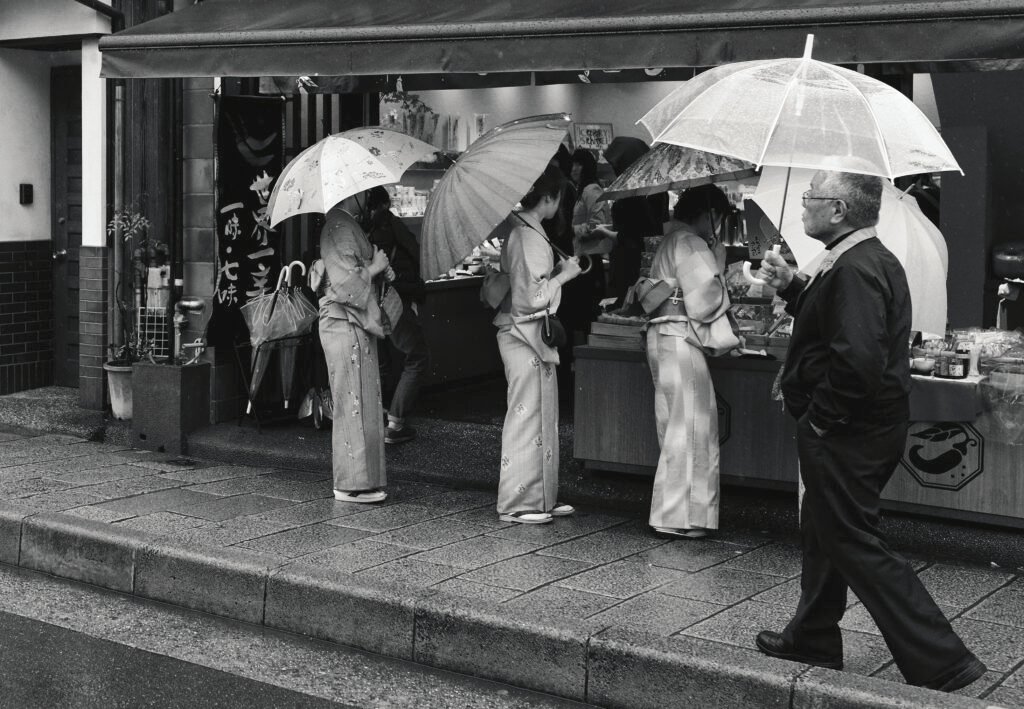
The rain falls in silver threads, light enough to whisper, soft enough to shine on the stone alleys of Kyoto’s old quarter. Lanterns flicker behind paper doors, and the scent of wet tatami, roasted tea, and old wood rises like incense.
Three Japanese women walk in silence, dressed in kimono that bloom against the gray—one in plum with cranes, one in ivory with falling sakura, one in indigo waves. Each holds an umbrella–a token protection against the rain. They move together like a floating poem—heels clicking softly on slick cobblestones, hair neatly pinned, obi tied with care, not for tourists, but for the joy of tradition.
They stop at street stall with keen interest–a box of matcha mochi, a tray of yatsuhashi dusted in cinnamon, a porcelain fox figurine. They speak quietly. A laugh escapes—soft, like wind through cedar. The woman in indigo wipes her umbrella tip on the step before stepping back out.
The rain continues. The umbrellas bloom again like paper moons, and the three of them walk on, past lanterns, willow trees, and the soft hush of Kyoto’s breath—elegant, ephemeral, a moment the city will fold into its sleeve like a treasured silk memory.